Resources
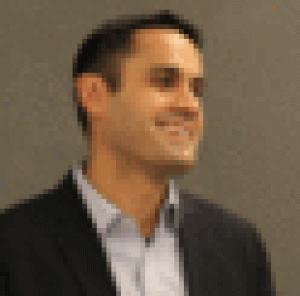
Eric D. Barreto Editor’s note: Today’s blog is Eric's final individual entry for this year of Stories from the Front (of the Classroom). Look for our final collaborative post on Tuesday May 19. One of the things I love most about teaching is the rhythm of the academic year: the...

An academic dean friend of mine once asked in frustration, "Why is this work so hard?!" I'm not sure I know the answer to that question. Some jobs are just more challenging due to the complexity of the work and...
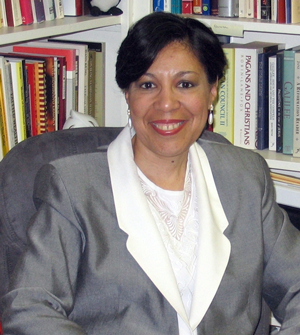
Loida I. Martell-Otero Professor of Constructive Theology Palmer Theological Seminary of Eastern University When those of the dominant culture express shock and dismay at events such as those that took place in Ferguson, Missouri in 2014, when they claim with indignation that this “should never happen again,” I think of a Puerto Rican proverb: “No hay peor ciego que el que no quiera ver (There is no worse blind person than the one who refuses to see).” Joseph Barndt observes that in the socialization process of being raced as white, the dominant culture is not only segregated from people of..
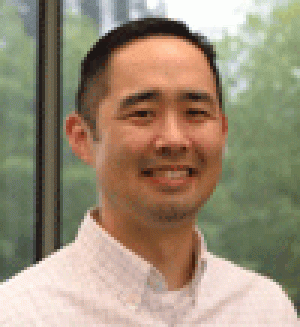
Roger Nam Editor’s note: Today’s blog is Roger’s final individual entry for this year of Stories from the Front of the Classroom. Look for our final collaborative post on Tuesday May 19. As my yearlong sabbatical in Korea comes to a conclusion, I have been thinking about the multiple seasons...

As the director of the Doctor of Ministry degree program at my school, I quickly grabbed The Handbook for Advising Graduate Students in hopes that it would serve as a companion for advisors in the program. Perusing the table of contents continued this hope. Many advisors of graduate students follow the axiom of teaching: we advise as we were advised. Advisors generally lack the time to reflect on and improve our practices of advising above or beyond what we ourselves received. Additionally, program directors rarely take the necessary time to invest in the pool of graduate advisors for the sake of our students. The Handbook for Advising Graduate Students attempts to invite reflective practice toward improving the graduate student experience. The book is a primer on the intention and attention necessary for the advising relationship. The table of contents alone is instructive for advisors to remember what matters in advising; the order moves from defining the relationship, to student-centered practices, to boundaries and sticky situations, to career support, and finally to developing a culture for student-centered advising. Part one covers the basics of the student-advisor relationship, namely offering different models for advising. Bruce Shore names three dominant models for how advisors or students select one another: pedigree (specialist relationship), patronage (for research funding), or kindred spirit (interpersonal connection) (10-11). Regardless of which of these models an advisor chooses, Shore argues it must be tied to the student’s interest and the advisor’s strengths. Chapter two takes up practices for student-centered advising. Shore makes clear that student-centered advising is not coddling or enabling; it is empowerment. He writes, “The most valuable thing an advisor can do with a graduate student is to welcome and empower her or him from the first encounter into the shared process of creating knowledge, conceptualizing grant applications, preparing conference presentations, writing for publication, helping with editing and so on” (22). Advising is mentoring for the academic vocation and encouragement toward career fulfillment. Shore emphasizes that time counts, especially time spent in providing feedback and being accessible (37). Advisors need to develop the skills that increase advisor accessibility and student empowerment. Shore proposes this work as an interrogative skill known as scaffolding. Scaffolding makes the student an active participant in the graduate school process and locates the advisor as the interrogator toward student progress. The advisor’s role is to regularly ask, “Where are you now? What is the next step? What can I do to help you get to that next step?” (41). This last question is an evaluative step that takes time and presence, yet also solidifies the relationship toward its necessary end – degree completion and employability. The book concludes with a chapter for degree program advisors. Advisor development or enrichment is key in developing a culture of student-centered advising. Just as the scaffolding process works for students, deans and program directors can use the scaffolding questions to assist advisors. Appendix 3 provides a checklist for assessing advisors according to student-centered practices. The Handbook for Advising Graduate Students is an important idea and assists program directors and advisors in recognizing the content and process of the advising relationship. The book raises important issues in advising graduate students, but is limited in its ability to coach advisors in the work. Shore offers several helpful tricks from his own work in advising, yet because his experiences is the only perspective included, the book lacks the best practices of advising that could come from a broader work engaging multiple types of advisors from multiple kinds of institutions. Shore’s volume gives reason to write a second book on advising graduate students. Advisors and program directors need a volume that gathers best practices from graduate student advisors and that also includes the voices of students. I would recommend that such a volume adopt a success case methodology that begins with asking recent PhD and professional program graduates about their experiences with advisors. A volume that gathers student stories and advisors’ self-understanding would be helpful in developing advisor training and enrichment exercises for doctoral and professional degree programs.
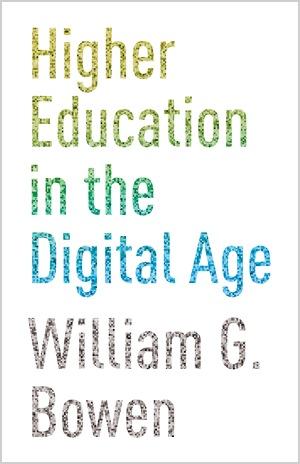
What is the unique value of higher education? What is effective instruction? Is there a cost crisis that is threatening the value and efficacy of higher education? Can technology offer a solution? These are a few of the questions posed by William Bowen and others in Higher Education in the Digital Age. This readable and thought-provoking book consists largely of lectures delivered by Bowen at Stanford University in 2012. The discussion of these issues is expanded to include other voices of leadership in higher education, all of whom contribute responses to Bowen’s original lectures. Bowen addresses the pressures facing university administrators who must balance all aspects of post-secondary education: cost to students, quality of education, financial support of research, and costs of personnel. The first two of three sections are lectures Bowen delivered at Stanford. The first lecture describes the economic issues facing institutions of higher education, including problems of affordability and the lack of productivity-increases in higher education compared to other industries. The second lecture implores leaders in higher education to address the dual issues of rising tuition and rising expenditures and to, at the very least, try to slow the rates of increase. His possible solutions look to technology (online or hybrid instruction) to increase productivity. In so doing, he opens up a larger discussion on what qualifies as actual learning and what costs (to quality of education and to funding for development and implementation) are acceptable. The discussion among higher education leaders and administrators in the third section of the book is its greatest value. The discussion hits on many of the economic and societal issues Bowen brings up: the flattening of family incomes, rising tuition rates, issues of completion rates, the pros and cons of MOOCs (Massive Open Online Courses), and issues raised by the existence of for-profit degree-granting institutions. All of the authors come from top tier research institutions: Harvard, Stanford, Columbia, and Princeton. One wonders how different the conversation would be if more publicly-funded universities, smaller liberal arts colleges, or community colleges participated in the discussion. While some of the writers acknowledge this bias and seek to qualify it by examining data from other types of institutions, their solutions (that require a large amount of funding) seem removed from the reality at other institutions. In spite of this limitation, the authors of Higher Education ask questions that invite reflection and conversation, given the financial situation in which many institutions find themselves. What value do we offer our students? Will the drive to increase productivity take that value away? Does technology offer opportunities to improve education while also increasing productivity? Can online learning maintain what is most valuable in a liberal arts education? The solutions offered are not a total fix (by the authors’ own admission), but the dialogue initiated in Higher Education presents administrators, faculty, and staff with an opportunity to rethink and innovate traditional teaching methods.
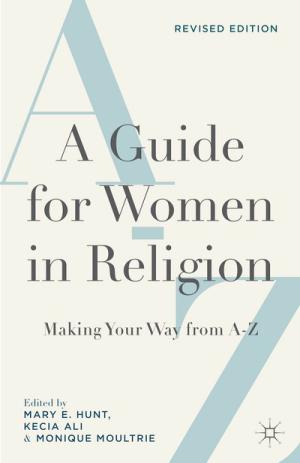
For many women, the transition into and through a career is not nearly as straight as a recitation from A to Z. To their eternal credit, Hunt, Ali, and Moultrie emphasize in almost every entry of their Guide for Women in Religion that the path for women is neither linear nor chronological. Despite vast political, legal, cultural, educational, and professional changes by and for women in the most recent decades, women are best served approaching their education and careers in this academic field of religion and religious studies equipped with this valuable, updated Guide for Women in Religion. Feminist theologian, professor, and human rights activist Dr. Mary L. Hunt edited the first edition of A Guide for Women in Religion in 2004 (Palgrave). That book’s existence was necessitated by some of the troubling realities that women face in the academic world of religion and religious studies; sadly, from undergraduate through tenured professorships, many – if not most – women encounter some form of the intersections of “sexism, racism, Christian hegemony, economic injustice, Postcolonialism, and discrimination based on sexual choices” (1). The authors note that encountering any of these issues can be made all the more difficult by women in power positions who replicate many of the abusive behaviors that are deeply entrenched in academic cultures (18, 131), behaviors which have for far too long tolerated, ignored and even sometimes rewarded. The second edition (2014) builds on a fine first edition, and offers an updated Resource section (201-04) that tackles the integration of technology and its implications for women in the field (especially as it relates to online teaching [120]), and extends advice that is applicable to an audience that spans from the first-year, undergraduate student to the emerita professor. In addition to an “Editor’s Introduction to the Revised Edition” (1-2), the “Introduction to the Original Guide” (3-8) is also retained, which provides useful history for the Guide’s original purpose: as more women entered the field, dominant realities that prevented female success resulted in increased questioning and subsequent development for women to “network, discuss common concerns, and share skills” (4). One of the many changes and tools introduced in the 1970s and 1980s was the Guide to the Perplexing: A Survival Manual for Women in Religious Studies (Oxford University Press). This vital guide was written to encourage pro-active approaches for female students and scholars, to educate women and men on the realities that women face in the field, and – perhaps most valuable – to name the isolating hardships that, for women, often result in self-blame, self-criticism, and loss of confidence. One of the more valuable and important insights that this book highlights is the way in which Christian hegemony dominates the field of religion (especially 35-37) and the multiple ways hegemony is manifest, from stages as vast as the AAR/SBL guild to the intimacy of the classroom. Made all the more challenging by Postcolonial understandings of religions as systems of belief which stand in opposition to one another (127-28), and all the more confusing when institutions welcome feminism within limits (35), women in the field of religion encounter Christian hegemony at the same time questions of social justice, diversity, race, and gender are being vigorously engaged (36). Guides such as this are not just useful, they are essential. Academia is, as the authors of the previous Guide wrote in 1992, a “minefield of stereotypes and prejudices,” (Guide to the Perplexing, 30) and hostilities that women face continue to be (not so) clear and present dangers. Consequently, this updated Guide for Women in Religion continues to remain relevant and necessary, despite the sweeping achievements of women in the field. While it is obvious that women engaged in the study or work of religion are the primary audience of this book, individuals of all gender identities would do well to pay heed to its contents; ignoring the importance of this guide for all people in the field of religion and religious studies does a disservice to the primary audience.
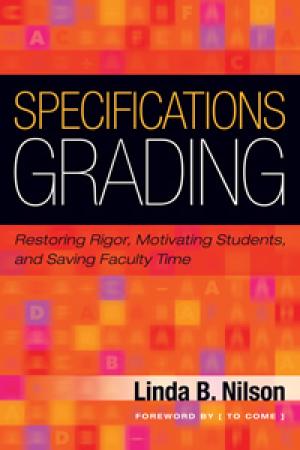
Concerns about mastery of learning outcomes or competencies, grade inflation, student motivation, and faculty time compel reflection on how we assess students in higher education. In Specifications Grading, Nilson critiques the traditional, point-based grading system and argues that students should be assessed on whether they have mastered course learning outcomes. She proposes specifications (specs) grading as a positive alternative to the current grading system. Nilson makes the case for specs grading in ten chapters. Chapter 1 examines critiques of the traditional grading system and offers fifteen criteria for judging a grading system. Chapter 2 briefly introduces learning outcomes and course design. In chapter 3, Nilson shows that grades should correspond to whether a student has mastered learning outcomes. Nilson ties grades to specific learning outcomes: a student can earn higher grades for demonstrating the amount of their learning, mastering more learning outcomes, or both (25). In chapter 4, Nilson argues that assessments should be graded pass/fail because this raises the expectation for a passing grade to the B-level. This also potentially reduces faculty time spent grading as it eliminates the need to justify partial credit. In chapter 5, Nilson outlines some aspects of specs grading: a single level rubric, faculty clarity on assignments and assessment, student choice, and opportunities to resubmit work. Chapter 6 describes how to convert specs grading to final course grades by either employing a point system for assessment or requiring students to complete certain assessments (bundles or modules) to achieve a particular course grade. Chapter 7 offers examples of courses that employ specs grading in diverse disciplines. After addressing theories of motivation, chapter 8 demonstrates how specs grading can motivate students to master learning through student choice. Chapter 9 explains how to design a specs grading course and introduce students to this grading system. Chapter 10 evaluates specifications grading according to the fifteen criteria set out in chapter 1. Among its strengths, Specifications Grading offers experiential evidence from faculty as well as examples of specs grading from diverse disciplines. These examples encourage faculty to creatively re-envision their courses. Moreover, Nilson challenges faculty to draw on adult learning theories and motivational theory to promote mastery of course outcomes and encourage students to achieve their potential. Nonetheless, Nilson recognizes faculty’s hesitation in committing to a new grading system. As a result, Nilson describes (pure) specs grading courses as well as blended courses: courses that employ a mixture of point-based assessment and specs grading. These options enable faculty to slowly adjust to the new grading system or to attend to departmental or institutional grading expectations. Nilson argues provocatively for the ways specifications grading motivates students and raises the standard of student work. To do this, faculty must know their expectations for student work and be clear in the directions for assignments. Moreover, faculty must expect students to fulfill those expectations – to take responsibility for their own grades and master course outcomes.
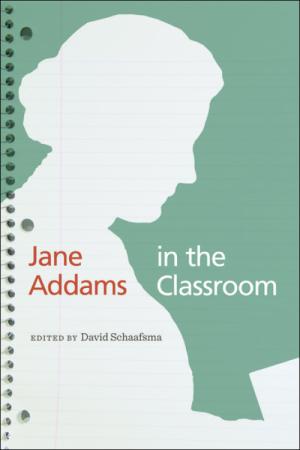
This book’s eleven essays propose ways in which educators might apply Jane Addams’s approaches to education and community engagement. Each essay offers a historical examination of Addams’s writing or work, followed by lessons in the practical application of her efforts to “socialize democracy” (13). With the exception of two Jane Addams Hull-House Museum affiliates, all contributions come from high school and university English instructors. Their general approach, however, applies to all educators, including those in religious studies and theology. As Petra Munro Hendry proposes, Addams’s work can inspire us to understand “teaching as a form of social ethics” (48). The book’s central message emphasizes the need to listen to and understand the experiences and worldview of one’s students and community. Concluding that the intellectual approach of our educational system fails to meet the needs of most citizens, Addams designed an “experiential, participatory learning” environment for the diverse immigrants of Chicago (62). She believed that accepted methods of cultural and social improvement for the working class merely reinforced the distance between social classes. Contributors to this volume interpret her approach as a challenge to teach social justice and engage the diversity of students’ experiences. Essays by Lanette Grate, Susan C. Griffith, and Erin Vail recount their successful classroom efforts to engage their students with local social justice issues, using Addams’s method of allowing current events to guide their work. Jennifer Krikava argues for the necessity of balancing the goals of outsiders (like standardized testing) with the need to equip students with skills that will enrich their future lives. Darren Tuggle agrees, demonstrating the benefits of reciprocal learning through his program that acclimates high school students to college life while providing learning experiences for university students training to become teachers. In these ways, educators address the unique needs and experiences of their students while simultaneously introducing them to the necessity of engaging their community and its social needs. Lisa Lee and Lisa Junkin Lopez explain how administrators can facilitate these processes through community programs. David Schaafsma and Todd DeStigter frame all these approaches as contributions to Addams’s efforts to “support democracy” (17). Retaining such a consistent focus unfortunately resulted in considerable repetition – several authors drew similar meaning from Addams’s account of the “Devil Baby,” for example. Greater variation and critique of Addams would have expanded its contribution and my confidence in the book’s historical interpretation. Schaafsma and Hendry’s essays offer sound critique, however, of current scholars and Addams’s contemporaries who dismissed her work and narrative-style writing as “sentimental” and “nonscientific” (190). The reformer’s methods reflected her ultimate point: dictating social change from a distance is undemocratic and at best ineffective, if not damaging. Reformers and educators must reject the dichotomy of benefactor and subject to embrace the contributions and participation of all people affecting a relationship, including those extending beyond the immediate contact. We can all use a reminder of this lesson, and this book suggests how to apply it to today’s educational system.
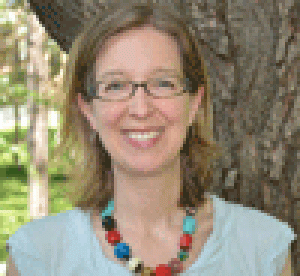
Kate Blanchard This is a post about that time I taught a semester-long class on a topic about which I knew almost nothing… or perhaps I should say “the most recent time.” This was no one’s fault but my own. I work at a college that has no requirement for...